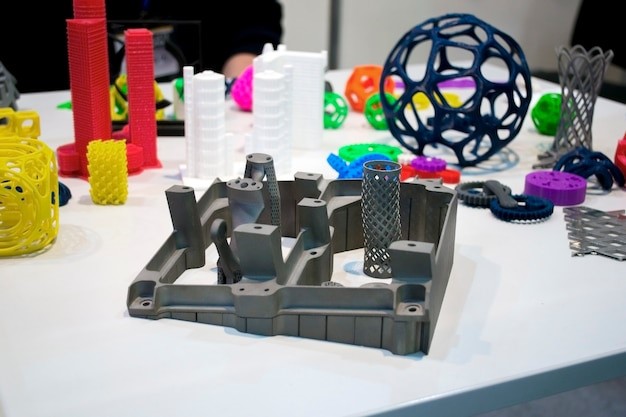Manufacturing is not a simple process, especially when it involves highly technical parts for sectors such as automobile and biotechnology. SLA 3D printing, molding, and tooling are the processes that play a vital role in manufacturing.
Molding and tooling include negative cavity space where molten plastic resin is injected to create a part. SLA 3D printing, on the other hand, includes a process that uses high-powered lasers to sinter, or bind, finely powdered material together into a solid structure. Stereolithography (SLA) is a cutting-edge technique that makes elaborate patterns and minute details come to life layer by layer, in the dynamic field of 3D printing. Let's discover the magic that happens when three-dimensional wonders are created with SLA 3D printing.

Precision- The Fundamental Principle of SLA 3D Printing
Precision is the fundamental idea of SLA 3D printing. In contrast to subtractive procedures used in traditional manufacturing methods, SLA uses liquid resin to produce items layer by layer. Each layer is carefully solidified by a high-precision laser, guaranteeing fine details and unmatched accuracy in the finished product.
Understanding the SLA 3D Printing Process
The process begins with a vat containing a liquid photopolymer resin. The laser technology of the SLA 3D printer carefully scans the resin's surface, hardening it in accordance with the digital design layer by layer. The construction platform progressively rises as each layer solidifies, making room for the subsequent layer to be added. The object is meticulously layered until it takes on its final form.
Complex Geometries and Intricate Designs
One of the best parts of SLA 3D printing is its ability to create objects with complex geometry as well as intricate designs. It is something that traditional manufacturing methods were not able to deliver. With this, SLA becomes a go-to choice for industries such as aerospace, healthcare, and jewelry, where precision and intricate detailing are paramount.
Exploring the Resin Palette of SLA Printing
A wide variety of photopolymer resins, each designed for a particular use, are available through SLA 3D printing. The material palette of SLA allows for customisation based on the intended purpose of the printed item, ranging from common resins suited for prototyping to specialist resins with features like flexibility, durability, or biocompatibility.
Rapid Development with SLA 3D Printing
When it comes to product development, SLA 3D printing in China shines as a product development powerhouse. The speed at which it can convert digital drawings into physical prototypes shortens the time needed for product development. Iterating designs fast allows engineers and designers to save a lot of time and money during the development process.
Advancements and Innovations in SLA Technology
SLA 3D printing is advancing along with technology. The main goals of ongoing SLA technology research and development are to increase printing speed, improve the variety of materials available, and enhance post-processing techniques. With further advancements, SLA is positioned to be a major player in manufacturing, opening up new opportunities in sectors including consumer products and healthcare.
Key Takeaways
SLA 3D printing in China is evidence of the amazing union of creativity and technology. By gradually converting digital concepts into physical products, it expands the realm of design and production possibilities. The future of 3D printing, which is always changing, is one in which accuracy and limitless creativity meet as the wonders of SLA printing continue to reveal themselves.
















